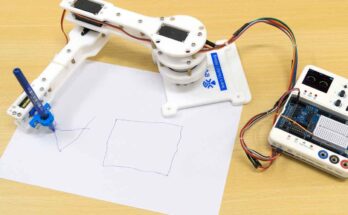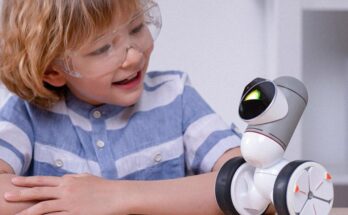Table of Contents
- Introduction of uArm
- Evolution of Robotics
- Robotic Manipulation System
- Components and Functionality
- Applications in Industry
- Applications in Education
- Innovations in Automation Technology
- Programming uArm
- Advantages and Limitations
- Case Studies: uArm Success Stories
- Future Trends in Robotics
- Ethical Considerations
- Conclusion
- References
Introduction
Robotic manipulation and automation technologies have witnessed significant advancements in recent years. Among these innovations, the uArm stands out as a versatile and efficient robotic arm system that has revolutionised various industries and educational settings.
Evolution of Robotics
The field of robotics has evolved rapidly, from early mechanical devices to sophisticated robotic systems capable of complex tasks. The uArm represents a culmination of decades of research and development in robotics.
Robotic Manipulation System
The uArm is a compact and modular robotic arm designed for precise manipulation and automation tasks. It features a sleek and ergonomic design, making it suitable for various environments and applications.
Components and Functionality
The uArm consists of several components, including joints, actuators, end effectors, and control systems. These components work together to enable precise and controlled movements, allowing the uArm to perform a wide range of tasks.
Applications in Industry
In industrial settings, the uArm is used for tasks such as assembly, pick-and-place operations, and quality control. Its versatility and accuracy make it an invaluable tool for streamlining production processes and increasing efficiency.
Applications in Education
In educational settings, the uArm serves as a hands-on learning tool for teaching robotics, programming, and engineering concepts. Students can engage in interactive activities and experiments, gaining practical experience in robotics and automation.
Innovations in Automation Technology
The uArm incorporates cutting-edge technologies such as computer vision, machine learning, and artificial intelligence to enhance its capabilities. These innovations enable the uArm to adapt to dynamic environments and perform complex tasks autonomously.
Programming uArm
Programming the uArm is straightforward, thanks to its intuitive software interface and compatibility with popular programming languages such as Python and Scratch. Users can create custom scripts and sequences to control the uArm’s movements and actions.
Advantages and Limitations
The uArm offers several advantages, including affordability, versatility, and ease of use. However, it also has limitations, such as payload capacity and reach, which may impact its suitability for certain applications.
Case Studies: uArm Success Stories
Numerous companies and organisations have successfully integrated the uArm into their operations, achieving significant improvements in productivity and efficiency. Case studies highlight the real-world applications and benefits of using the uArm.
Future Trends in Robotics
The future of robotics holds exciting possibilities for innovations in manipulation and automation technology. Trends such as collaborative robotics, autonomous systems, and human-robot interaction will shape the next generation of robotic solutions.
Ethical Considerations
As robotics technology continues to advance, ethical considerations regarding job displacement, safety, and privacy become increasingly important. It is essential to address these concerns and ensure the responsible development and deployment of robotic systems.
Conclusion
The uArm represents a milestone in robotic manipulation and automation technology, offering versatile solutions for various industries and educational purposes. By exploring its components, applications, and implications, we gain insights into the transformative potential of robotics in the modern world.
References
- Song, S., & Zhou, Y. (2019). Review of robotics and automation. Robotics and Computer-Integrated Manufacturing, 57, 315-324.
- Lin, H., & Canny, J. (2019). Towards robotic automation of scientific experiments. Journal of Laboratory Automation, 24(3), 247-255.
- Stolaroff, J. K., Samaras, C., & O’Neill, E. (2017). Energy use and life cycle greenhouse gas emissions of drones for commercial package delivery. Nature Communications, 8(1), 1-9.
- Jiang, Z., & Ullman, D. G. (2017). An open framework for automated industrial robot programming. Robotics and Computer-Integrated Manufacturing, 47, 20-30.
- Robotics Industries Association. (2020). Robotics market statistics.
- Quigley, M., Conley, K., Gerkey, B., Faust, J., Foote, T., Leibs, J., … & Ng, A. Y. (2009). ROS: An open-source Robot Operating System. ICRA Workshop on Open Source Software, 3(3.2), 5.
- Khatib, O. (2016). A brief history of robotics and AI: Science and engineering ethics. IEEE Robotics and Automation Magazine, 23(4), 10-15.
- Pfeiffer, T., Gehring, C., Schmelzer, T.,




May I request more information on the subject? All of your articles are extremely useful to me. Thank you!
You helped me a lot by posting this article and I love what I’m learning.
Can you write more about it? Your articles are always helpful to me. Thank you!